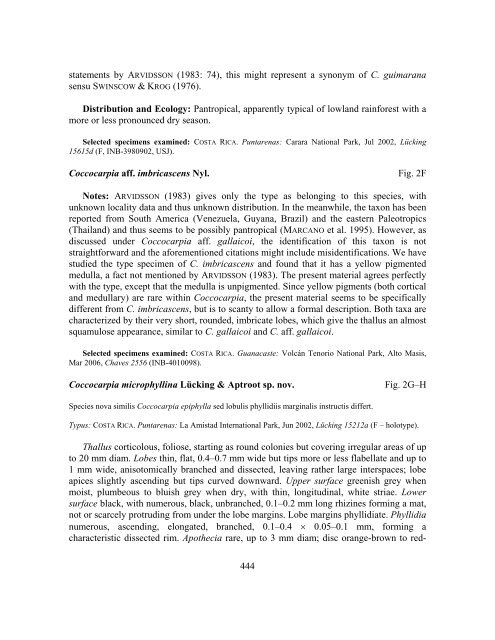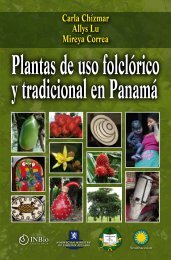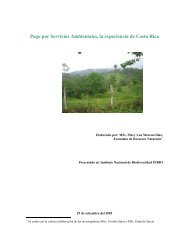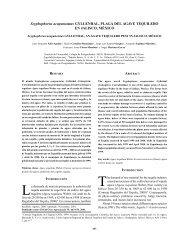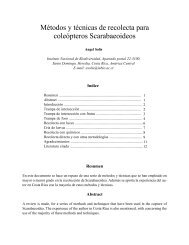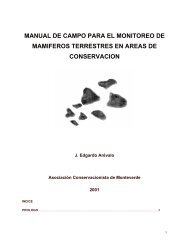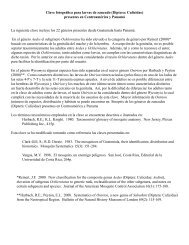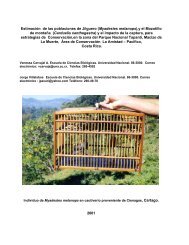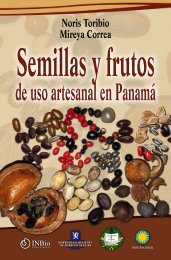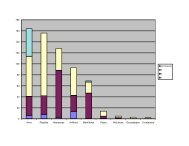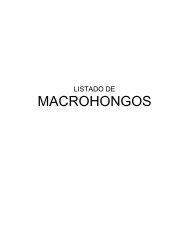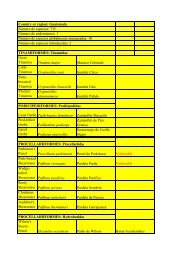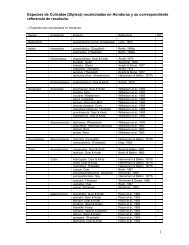the genus Coccocarpia (Peltigerales: Coccocarpiaceae) - Instituto ...
the genus Coccocarpia (Peltigerales: Coccocarpiaceae) - Instituto ...
the genus Coccocarpia (Peltigerales: Coccocarpiaceae) - Instituto ...
Create successful ePaper yourself
Turn your PDF publications into a flip-book with our unique Google optimized e-Paper software.
statements by ARVIDSSON (1983: 74), this might represent a synonym of C. guimarana<br />
sensu SWINSCOW & KROG (1976).<br />
Distribution and Ecology: Pantropical, apparently typical of lowland rainforest with a<br />
more or less pronounced dry season.<br />
Selected specimens examined: COSTA RICA. Puntarenas: Carara National Park, Jul 2002, Lücking<br />
15615d (F, INB-3980902, USJ).<br />
<strong>Coccocarpia</strong> aff. imbricascens Nyl. Fig. 2F<br />
Notes: ARVIDSSON (1983) gives only <strong>the</strong> type as belonging to this species, with<br />
unknown locality data and thus unknown distribution. In <strong>the</strong> meanwhile, <strong>the</strong> taxon has been<br />
reported from South America (Venezuela, Guyana, Brazil) and <strong>the</strong> eastern Paleotropics<br />
(Thailand) and thus seems to be possibly pantropical (MARCANO et al. 1995). However, as<br />
discussed under <strong>Coccocarpia</strong> aff. gallaicoi, <strong>the</strong> identification of this taxon is not<br />
straightforward and <strong>the</strong> aforementioned citations might include misidentifications. We have<br />
studied <strong>the</strong> type specimen of C. imbricascens and found that it has a yellow pigmented<br />
medulla, a fact not mentioned by ARVIDSSON (1983). The present material agrees perfectly<br />
with <strong>the</strong> type, except that <strong>the</strong> medulla is unpigmented. Since yellow pigments (both cortical<br />
and medullary) are rare within <strong>Coccocarpia</strong>, <strong>the</strong> present material seems to be specifically<br />
different from C. imbricascens, but is to scanty to allow a formal description. Both taxa are<br />
characterized by <strong>the</strong>ir very short, rounded, imbricate lobes, which give <strong>the</strong> thallus an almost<br />
squamulose appearance, similar to C. gallaicoi and C. aff. gallaicoi.<br />
Selected specimens examined: COSTA RICA. Guanacaste: Volcán Tenorio National Park, Alto Masis,<br />
Mar 2006, Chaves 2556 (INB-4010098).<br />
<strong>Coccocarpia</strong> microphyllina Lücking & Aptroot sp. nov. Fig. 2G–H<br />
Species nova similis <strong>Coccocarpia</strong> epiphylla sed lobulis phyllidiis marginalis instructis differt.<br />
Typus: COSTA RICA. Puntarenas: La Amistad International Park, Jun 2002, Lücking 15212a (F – holotype).<br />
Thallus corticolous, foliose, starting as round colonies but covering irregular areas of up<br />
to 20 mm diam. Lobes thin, flat, 0.4–0.7 mm wide but tips more or less flabellate and up to<br />
1 mm wide, anisotomically branched and dissected, leaving ra<strong>the</strong>r large interspaces; lobe<br />
apices slightly ascending but tips curved downward. Upper surface greenish grey when<br />
moist, plumbeous to bluish grey when dry, with thin, longitudinal, white striae. Lower<br />
surface black, with numerous, black, unbranched, 0.1–0.2 mm long rhizines forming a mat,<br />
not or scarcely protruding from under <strong>the</strong> lobe margins. Lobe margins phyllidiate. Phyllidia<br />
numerous, ascending, elongated, branched, 0.1–0.4 × 0.05–0.1 mm, forming a<br />
characteristic dissected rim. Apo<strong>the</strong>cia rare, up to 3 mm diam; disc orange-brown to red-<br />
444


